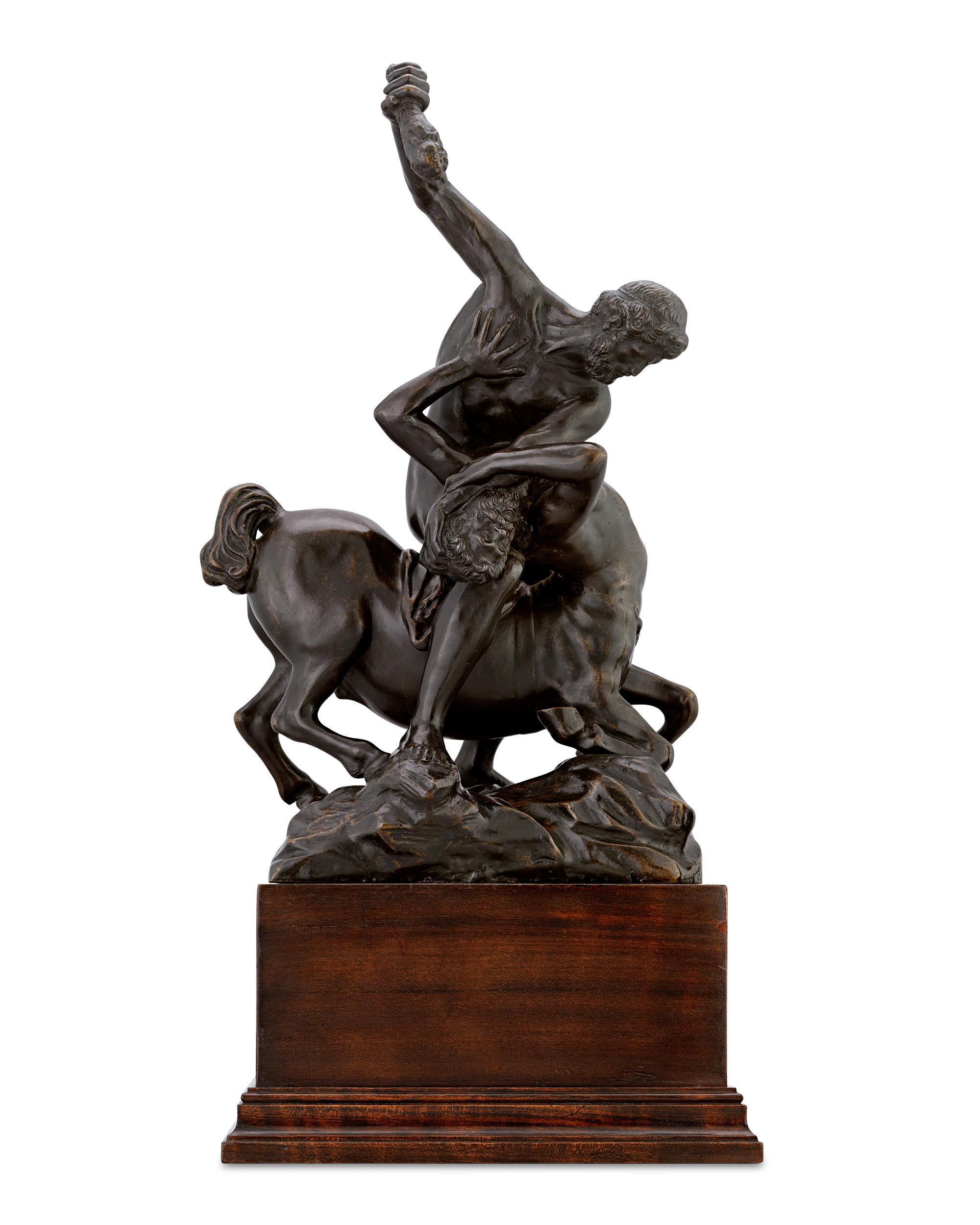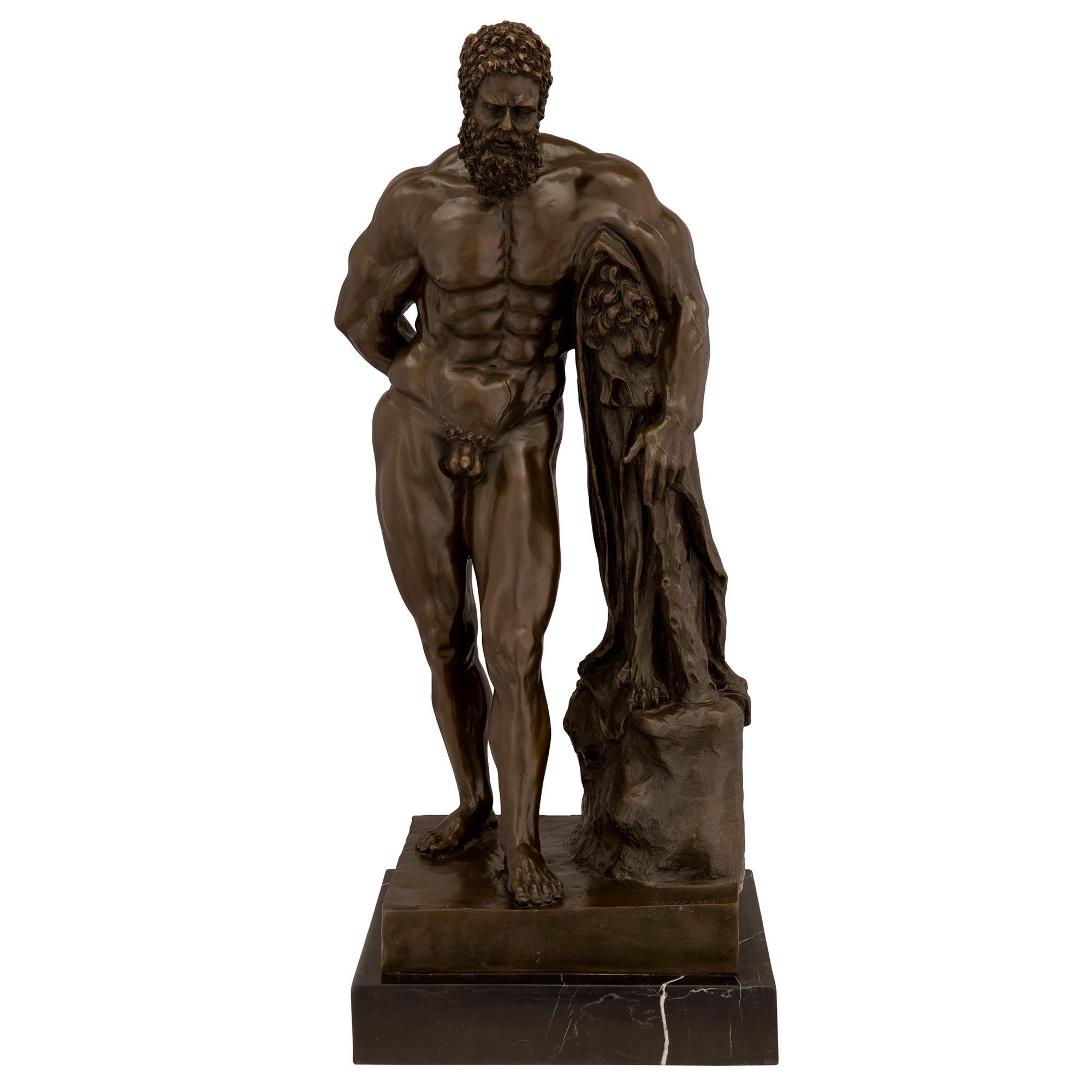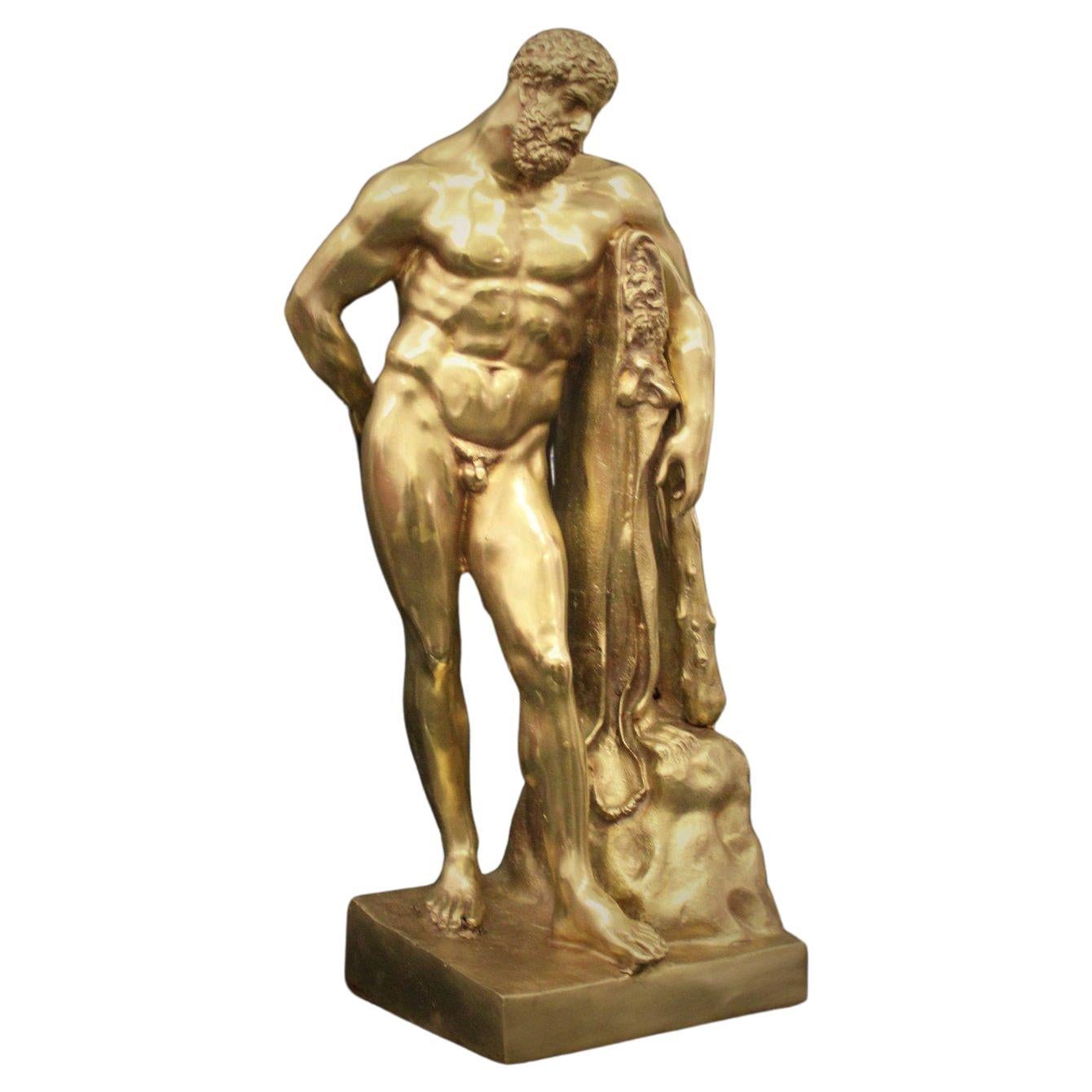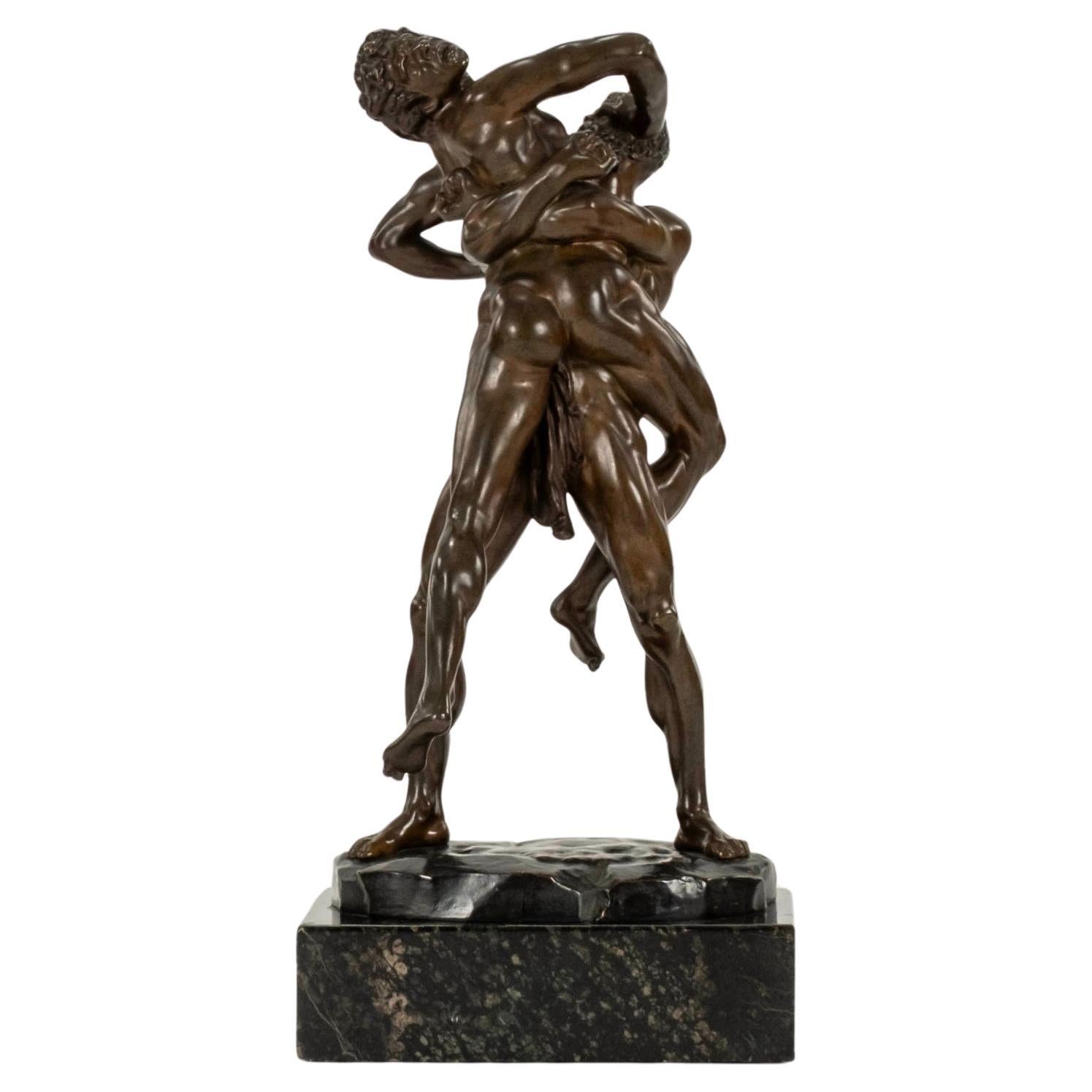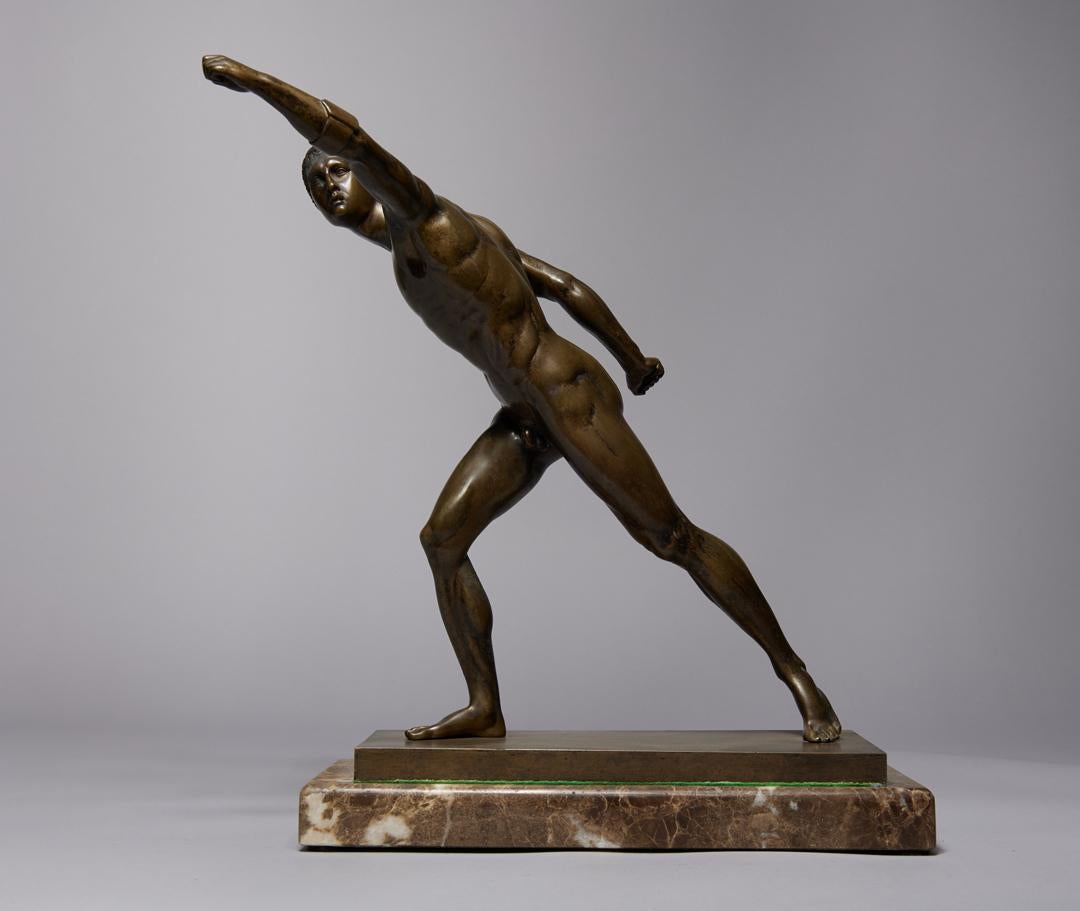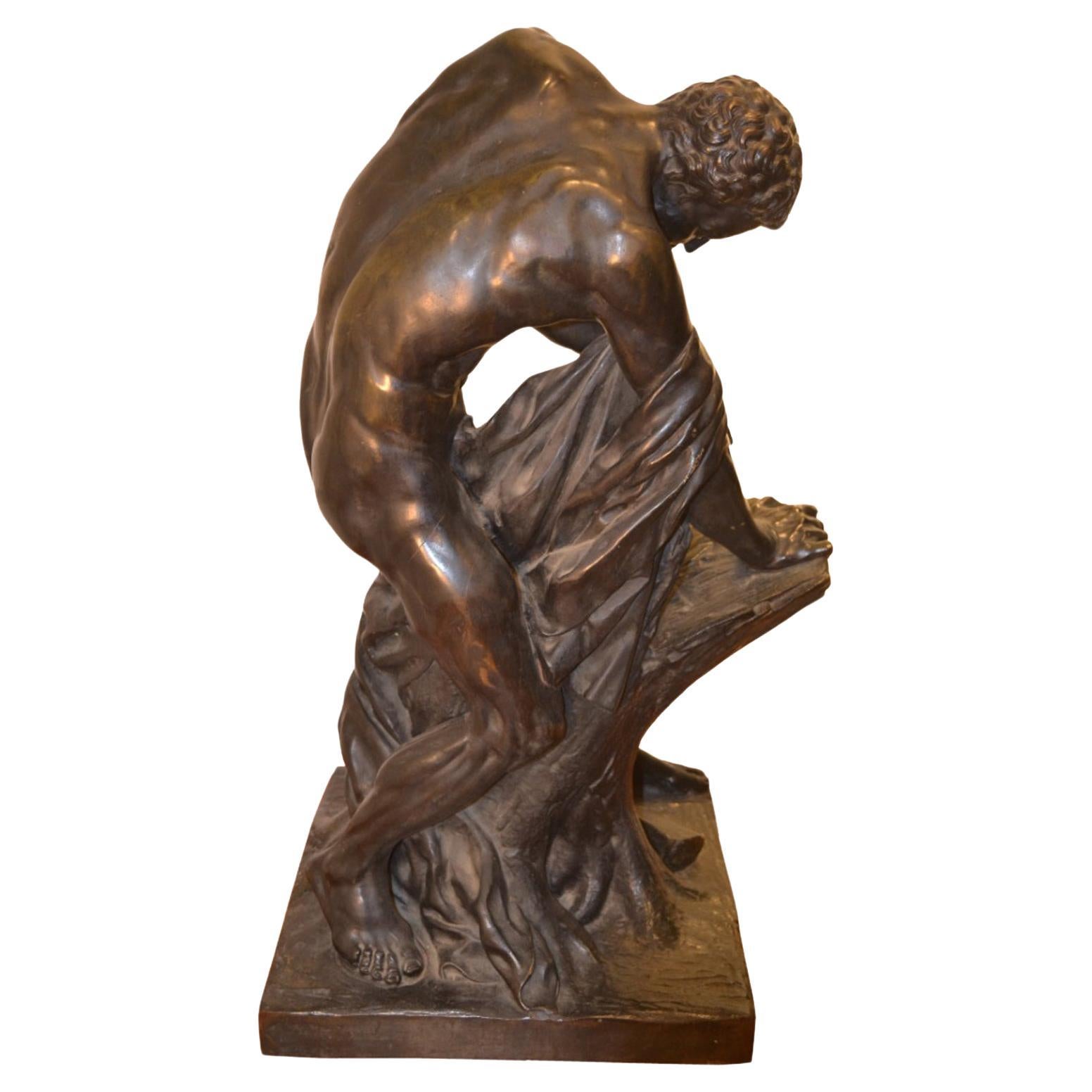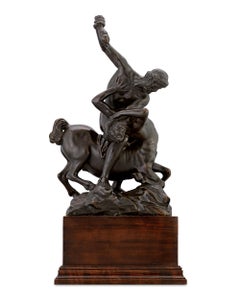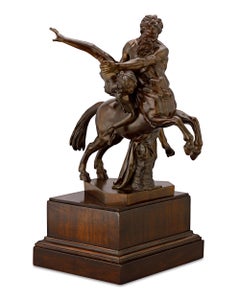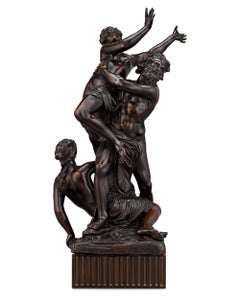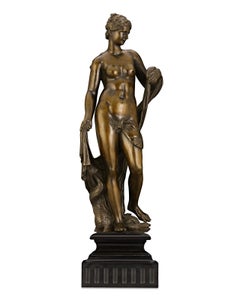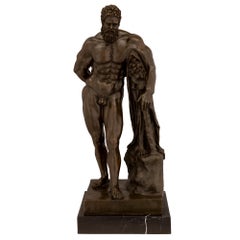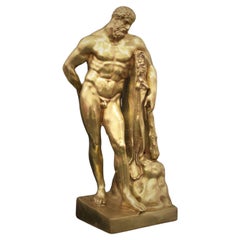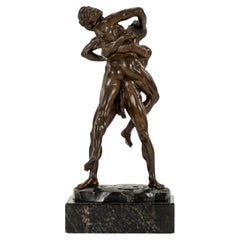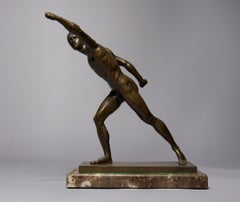Items Similar to Labors of Hercules Bronze Sculpture, 17th Century
Want more images or videos?
Request additional images or videos from the seller
1 of 5
UnknownLabors of Hercules Bronze Sculpture, 17th CenturyCirca 1680
Circa 1680
$38,500
£28,970.42
€33,492.01
CA$54,363.11
A$58,945.53
CHF 31,281.70
MX$725,989.12
NOK 387,716.91
SEK 365,915.62
DKK 249,992.62
About the Item
A rare example of late Renaissance sculpture, this impressive Italian bronze captures one of the greatest divine heroes of myth and legend: Hercules. The figure is rendered with stunning anatomical accuracy. With his legendary club raised, Hercules appears poised to strike an unknown foe, possibly the Dragon Ladon or the three-headed hound of Hades, Cerberus. Graceful and dynamic, it is a stunning interpretation of the idealized forms and movements so prized in the greatest sculptures of the Italian Renaissance.
Modeled after a work by the famed Renaissance sculptor Giambologna (now held in the Bargello National Art Museum in Florence), the present bronze is based on one of the most popular myths from Greek mythology—the Labors of Hercules. The divine hero was a favorite of Renaissance artists and sculptors. Legendary for his physical strength, he also came to represent a moral fortitude. The Labors of Hercules in particular lend the mythological figure a strength and perseverance that seemed beyond the grasp of mortals.
The story of Hercules’ Labors begins in tragedy after the demi-god is driven mad (under the influence of Hera) and murders his family. As penance, he is given twelve seemingly impossible tasks by his rival, King Eurystheus of Tiryns. By overcoming all odds and completing these labors, Hercules achieved immortality and, ultimately, came to embody the Greek ideal of pathos, or virtuous suffering.
With limbs spiraling outwards from his torso, Hercules is captured here in barely contained, violent motion. Poised to strike, his muscles are clearly defined over his powerful physique, which is perfectly captured in the smooth surface of the bronze. Imposing, yet graceful, the bronze demonstrates why Hercules has endured as a symbol of strength and courage. With its highly dramatic pose and remarkable anatomical accuracy, the figure embodies the elegant and expressive tension of late Renaissance Mannerist works.
The present figure is perhaps the rarest of its kind; only one other is known from the period, having been sold from the collection of Yves Saint Laurent and Pierre Bergé at Christie’s Paris, February 23-25, 2009, for €51,400 ($66,820). Other period examples of Hercules’ Labors can be found in the Wallace Collection in London, the Metropolitan Museum of Art in New York, the Victoria & Albert Museum in London and the Hermitage in St. Petersburg.
Circa 1680
21 3/4" high x 10 1/2" wide x 6 1/2" deep
- Creation Year:Circa 1680
- Dimensions:Height: 16 in (40.64 cm)Width: 9 in (22.86 cm)Depth: 7 in (17.78 cm)
- Medium:
- Movement & Style:
- Period:
- Condition:
- Gallery Location:New Orleans, LA
- Reference Number:Seller: 31-91741stDibs: LU18615841752
About the Seller
5.0
Vetted Professional Seller
Every seller passes strict standards for authenticity and reliability
Established in 1912
1stDibs seller since 2013
18 sales on 1stDibs
Typical response time: 11 hours
- ShippingRetrieving quote...Shipping from: New Orleans, LA
- Return Policy
Authenticity Guarantee
In the unlikely event there’s an issue with an item’s authenticity, contact us within 1 year for a full refund. DetailsMoney-Back Guarantee
If your item is not as described, is damaged in transit, or does not arrive, contact us within 7 days for a full refund. Details24-Hour Cancellation
You have a 24-hour grace period in which to reconsider your purchase, with no questions asked.Vetted Professional Sellers
Our world-class sellers must adhere to strict standards for service and quality, maintaining the integrity of our listings.Price-Match Guarantee
If you find that a seller listed the same item for a lower price elsewhere, we’ll match it.Trusted Global Delivery
Our best-in-class carrier network provides specialized shipping options worldwide, including custom delivery.More From This Seller
View AllHercules and the Centaur Nessus Bronze
Located in New Orleans, LA
This extraordinary Italian bronze embodies all of the hallmarks of the very best Florentine sculptures of the 17th century. The work is crafted in the Mannerist style of the late Ren...
Category
17th Century Mannerist Figurative Sculptures
Materials
Bronze
Nessus and Deianira Bronze
By Giambologna
Located in New Orleans, LA
A technical and creative masterpiece of the late Renaissance era, this extraordinary bronze figure depicts the famed Greek legend of The Abduction of Deianira. Bringing together the ...
Category
17th Century Renaissance Figurative Sculptures
Materials
Bronze
Bronze of Pluto Abducting Proserpine after François Girardon
Located in New Orleans, LA
After François Girardon
1628-1715 French
Pluto Abducting Proserpine
Bronze
This High Baroque period composition captures the famed narrative of Pluto and Proserpine from Roman mythology. The late 17th-century patinated bronze, created after François Girardon's marble composition, captures the very moment that Pluto seizes Proserpine. The anguished goddess reaches skyward, attempting to escape the god’s grasp while Pluto’s stoic face betrays his knowledge that his ploy will succeed. This pivotal moment in the mythological tale has captured the imagination of many art historical greats, from Bernini to Rubens. François Girardon’s version of the climax demonstrates incredible finesse and artistry, modeled expertly in bronze in the present work by a later sculptor. The statue brings a twist of intertwined bodies into a dynamic frenzy, paralleling the tension of the legendary story.
In ancient Roman mythology, Proserpine, the beautiful daughter of Ceres — known as Persephone in Greek mythology — was picking flowers in the fields when she was suddenly abducted by Pluto, the god of the underworld, and taken to his kingdom. Consumed with grief, her mother Ceres, the goddess of agriculture, scorches the earth, stopping the growth of grain and fruit. Jupiter attempts to intervene and secure Proserpine’s return to earth, negotiating a compromise with Pluto and the Fates that allows Proserpine to be released for part of the year before returning to Pluto’s underworld. Proserpine’s journey back and forth is an allegory for the changing seasons; when Prosperine is with her mother, the earth warms and provides bountiful harvests. Upon her annual return to the underworld, however, the earth once again becomes cold and barren.
After returning to France after years of training in Rome, François Girardon quickly rose to become one of the greatest artists in France. He was elected a member of the Académie Royale de Peinture et de Sculpture in 1657 and would become Chancellor of the Royal Academy in 1695. The artist was approached frequently for royal commissions and Girardon’s Pluto was originally commissioned by Louis XIV for the gardens at his Palace of Versailles. It was one of four monumental marble groups intended to decorate the corners of Charles Le Brun’s never completed garden at the chateau, the Parterre d’Eau. Each group of three figures symbolized one of the four elements: earth, air, fire and water. Pluto’s association with hell made him the apt...
Category
Early 18th Century Baroque Figurative Sculptures
Materials
Bronze
Bronze of Amphitrite after Michel Anguier
Located in New Orleans, LA
After Michel Anguier
French 1612-1686
Amphitrite
Bronze
This remarkable bronze masterpiece was cast after a High Baroque masterwork by French sculptor Michel Anguier. After traini...
Category
17th Century Baroque Nude Sculptures
Materials
Bronze
Patinated Bronze Statuette of William Shakespeare
By Frederick William MacMonnies
Located in New Orleans, LA
Frederick William MacMonnies
1863–1937 American
William Shakespeare
Signed "F. MacMonnies" and foundry-marked "E. Gruet Jeune, Fondeur, Paris"
Bronze
Frederick William MacMonnies...
Category
19th Century Academic Figurative Sculptures
Materials
Bronze
Perseus
Located in New Orleans, LA
The legendary Greek god Perseus is the subject of this elegant half-bust by Ubaldo Gandolfi, a major painter and sculptor from Bologna. The son of Zeus and Danaë, Perseus was the le...
Category
Mid-18th Century Other Art Style Figurative Sculptures
Materials
Terracotta
You May Also Like
Patinated Bronze Statue of Hercules
Located in West Palm Beach, FL
An impressive patinated bronze statue of Hercules. The statue is raised by a square Black Antique marble base. Above is the handsome patinated bronz...
Category
Antique 19th Century Unknown Figurative Sculptures
Materials
Bronze
Hercules In Gilded Bronze
Located in Rome, IT
Description:
Hercules in gilded bronze.
ADDITIONAL PHOTOS, INFORMATION OF THE LOT AND SHIPPING INFORMATION CAN BE REQUEST BY SENDING AN EMAIL
Tags: Ercole in bronzo dorato
Period:
...
Category
20th Century Figurative Sculptures
Materials
Bronze
Hercules Antaeus Bronze Sculpture by Carl Kauba
By Carl Kauba
Located in Houston, TX
Bronze Sculpture of Hercules and Antaeus crafted and signed by Carl Kauba. This sculpture depicts the tale of Hercules' battle against Antaeus.
Antaeus, son of Gaia and Poseidon,...
Category
Antique 19th Century Austrian Figurative Sculptures
Materials
Marble, Bronze
19th Century Bronze of the Borghese Gladiator Sculpture
Located in Beachwood, OH
The Borghese Gladiator, 19th Century
Bronze on marble base
Musée du Louvre signed on base
15 x 12 x 8 inches
Since its discovery in the early seventeenth century, the Borghese Gladi...
Category
19th Century Figurative Sculptures
Materials
Marble, Bronze
Bronze Statue of the Roman Greek Wrestler Milo of Croton After Dumont
By Jacques-Edme Dumont
Located in Vancouver, British Columbia
A fairly large 19th century French bronze statue of the Milo of Croton on a stepped marble base after the original marble statue by sculptor Edme Dumont (1...
Category
Antique Late 19th Century French Neoclassical Figurative Sculptures
Materials
Bronze
Hercules & Lichas, Grand Tour Italian Patinated Bronze Group, Antonio Canova
By Antonio Canova
Located in New York, NY
An Italian patinated bronze figural group depicting Hercules and Lichas, after the model by Antonio Canova (1757–1822). The base is incised “Canova Roma,”. The composition is based o...
Category
Antique 1850s Italian Neoclassical Figurative Sculptures
Materials
Bronze
More Ways To Browse
Antique Sculpture
Antique Sculptures
Bronze Nude Sculpture
Antique Hercules
Antique Bronze Nude
Wallace Antique
17th Century Bronze
Renaissance Italian Bronze
Bronze Sculpture 17th Century
Hercules Bronze
Richard Bankes Harraden
Robert Buck
Robert Colquhoun
Robert Rey
Roman Architectural Engraving
Ruby Throated Hummingbird
Russian Cubist Art
Salsa Dance
